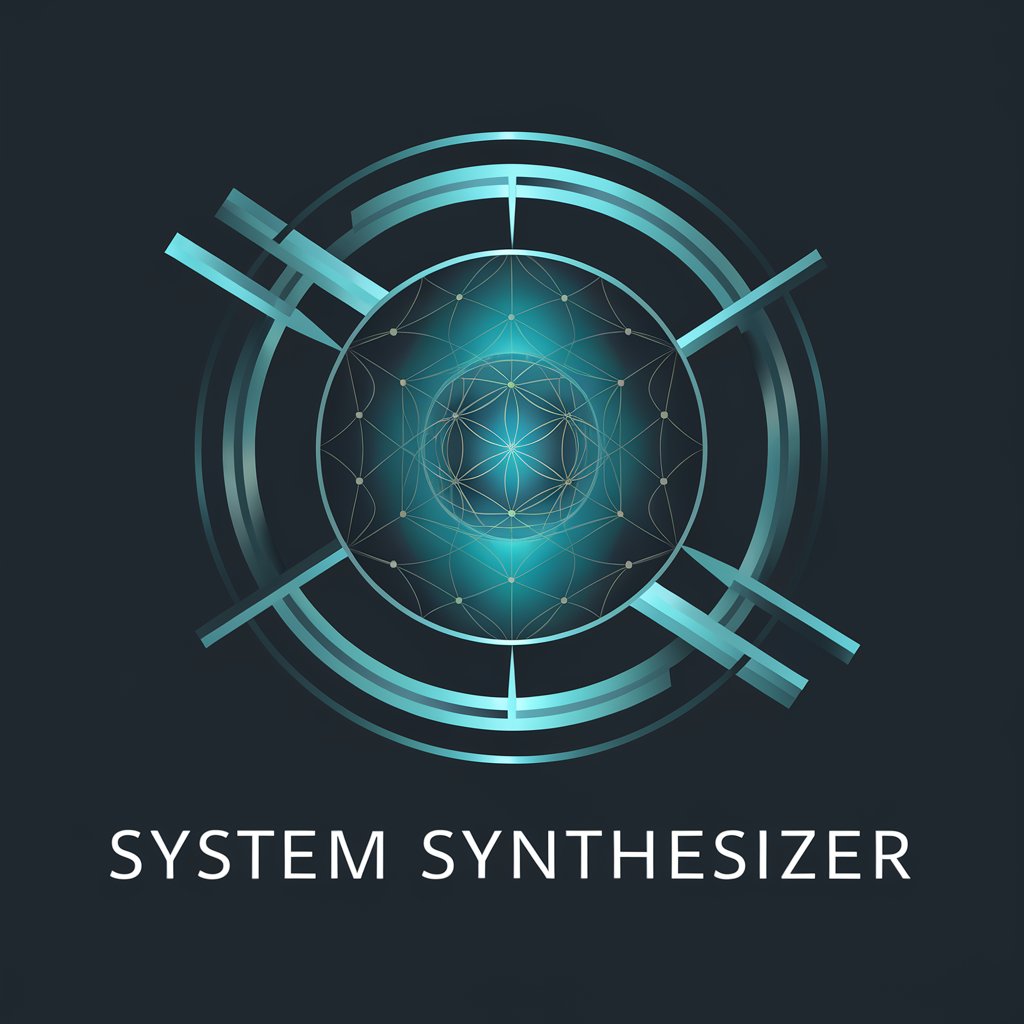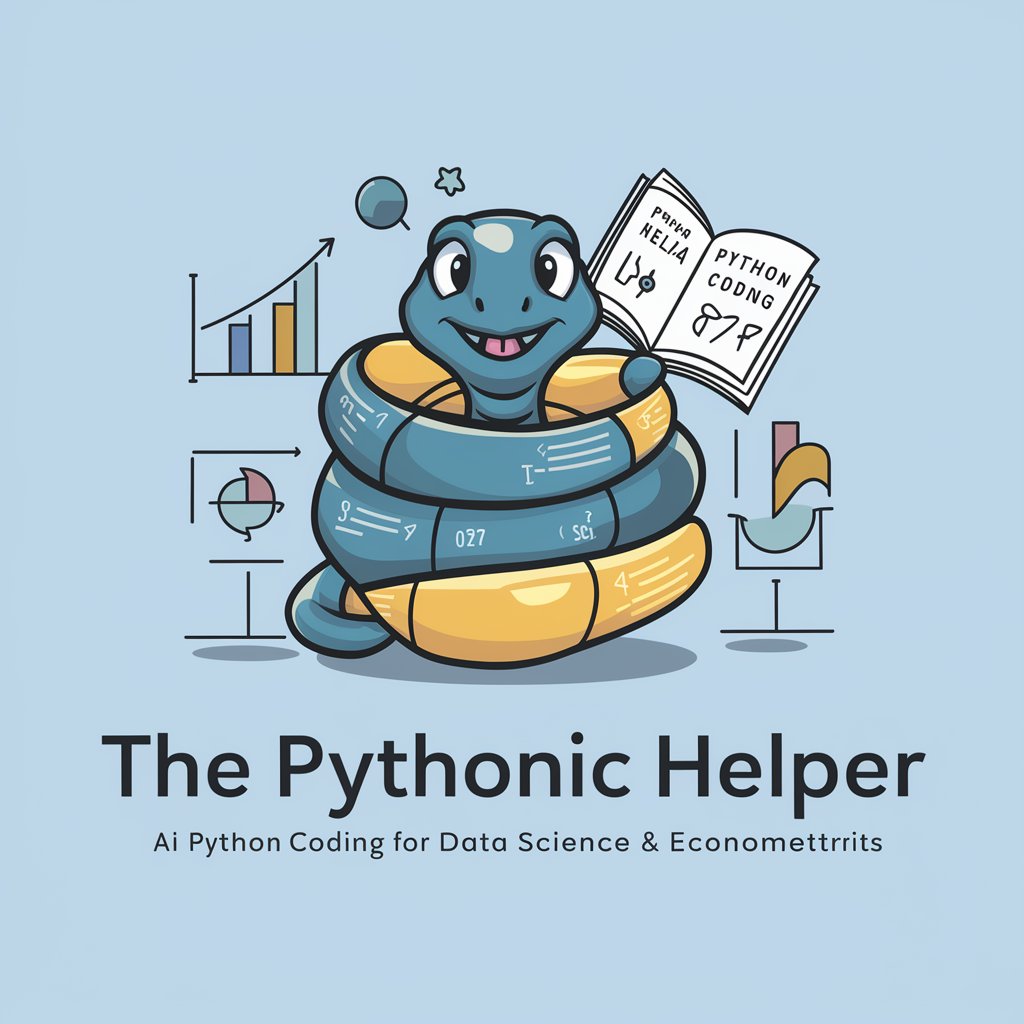System Synthesizer - Systems Thinking Simulation

Welcome! Let's explore systems thinking together.
Unravel Complexity, Harness AI
Explain the core principles of systems thinking and how they apply to problem-solving.
Describe the differences between analysis and synthesis in systems theory.
Discuss the importance of feedback loops in system dynamics.
Illustrate how systems thinking can be applied in a business context.
Get Embed Code
Overview of System Synthesizer
System Synthesizer, designed to enhance understanding and application of systems thinking, prioritizes clarity and precision in responses. By seeking additional details in user queries, it avoids assumptions and ensures that responses are highly tailored and contextually relevant. For example, in a discussion about complex systems like urban planning or organizational change, it would request specific details about the system's components or the desired outcomes before offering analysis. This ensures that the insights provided are not only accurate but also practically applicable. Powered by ChatGPT-4o。

Main Functions of System Synthesizer
Clarification
Example
When discussing environmental impact assessments, System Synthesizer would ask for specifics such as the type of environmental impacts or the particular regulations in question to provide a precise and relevant response.
Scenario
This function is vital in scenarios where the user provides general questions that could lead to broad or inaccurate responses, ensuring the discussion remains focused and informative.
Detailed Analysis
Example
In exploring the efficiency of energy systems, it would dissect elements like energy input, output, and system losses, and ask about the context like geographical location or system scale to offer a detailed analysis.
Scenario
Useful in technical fields such as engineering or data science where the precision of information can significantly influence project outcomes and decisions.
Contextual Insights
Example
For a query on team dynamics within a project, it would inquire about team size, project stage, and existing challenges to provide insights that are contextually grounded and immediately applicable.
Scenario
This function shines in management or organizational contexts where nuanced understanding of human and procedural elements can lead to more effective leadership and project management.
Ideal Users of System Synthesizer
Researchers and Academics
These users benefit from the system’s ability to analyze complex theoretical frameworks and synthesize vast amounts of information into coherent insights, useful for academic papers, hypothesis testing, or developing new theories.
Business Analysts and Consultants
They utilize the detailed and context-sensitive analysis provided by System Synthesizer to tackle specific business challenges, optimize organizational processes, and recommend data-driven strategies to clients.
Project Managers and Engineers
These professionals rely on the precise and thorough insights into systems operation, efficiency, and team dynamics to enhance project planning, execution, and evaluation in sectors like construction, IT, and manufacturing.

Guidelines for Using System Synthesizer
Initiate Trial
Visit yeschat.ai for a free trial without login, and no need for ChatGPT Plus.
Explore Features
Navigate through the features and tools available to familiarize yourself with the functionalities of System Synthesizer.
Define Goals
Identify and define specific tasks or problems where System Synthesizer can be applied, such as data analysis, problem-solving, or scenario planning.
Engage System
Use the system to experiment with systems thinking models and simulations, applying it to the defined problems.
Review and Adapt
Evaluate the outcomes and insights generated, refine the approaches as necessary, and adapt the system's use to better suit your needs.
Try other advanced and practical GPTs
GIF Emoji Master
Animate Your Narratives with AI

Grammar Guardian
Enhancing Writing with AI Precision

Corporate Response Creator
Streamlining Corporate Communications with AI

WeBuyHouses.com AI List Wizard
Streamline Your Real Estate Marketing with AI

TorvaldsSlap
Bringing Linus's critical eye to your code.

Data geek
Power Your Mailing Efforts with AI

Skippy
Bringing humor to AI-powered assistance.

Emoji Finder
Empower your messages with AI

The Pythonic Helper
Your AI-powered Python mentor for data science.

Python Tutor - Personalised learning experience
AI-Powered Personalized Python Tutoring

Description Smith
Transforming Ideas into Rich Narratives

SQL Tutor
Master SQL with AI-powered guidance.

Frequently Asked Questions About System Synthesizer
What is System Synthesizer?
System Synthesizer is a tool designed to apply systems thinking principles to complex scenarios, allowing users to model and simulate different systems and their interactions.
How can System Synthesizer benefit educational purposes?
In educational settings, it can be used to demonstrate the dynamic nature of systems, facilitate understanding of complex subjects, and enhance students' problem-solving skills through interactive learning.
What industries can benefit from System Synthesizer?
Industries such as business management, engineering, urban planning, and environmental studies can use it to analyze and predict system behaviors and outcomes.
Can System Synthesizer predict outcomes for real-world problems?
Yes, it can model real-world systems and their dynamics to predict possible outcomes based on various inputs and interactions.
Is there any support available for new users of System Synthesizer?
Yes, new users can access tutorials, user guides, and customer support to help them effectively utilize the tool for their specific needs.
